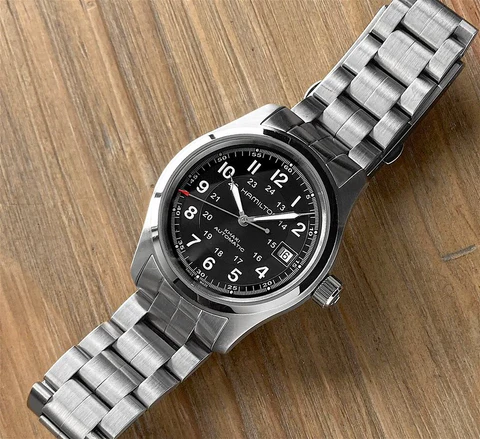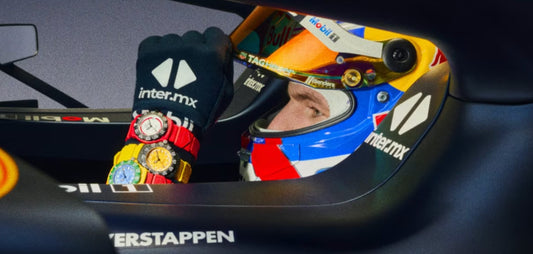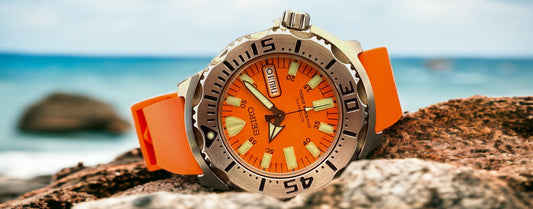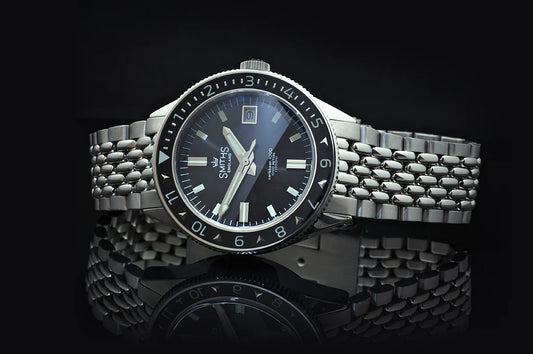Watches are more than just timekeeping instruments; they're statements of personal style, engineering marvels, and sometimes, investments. They can be signifiers of success, epitomes of craftsmanship, or even sentimental heirlooms passed down through generations. However, as you move up the pricing ladder, it's natural to question the correlation between price and value. Is the experience of owning a $5,000 watch fundamentally superior to that of a $500 one? Does a higher price tag truly reflect higher quality, better functionality, or more exquisite design? Or do we start stepping into the realm of diminishing returns as the numbers on the price tag climb?
In this article, we aim to delve deep into this intriguing topic, offering insights to both seasoned collectors and newcomers alike.
The Under-$500 Range: A Landscape Flourishing with Choices Beyond Just Beginner's Luck?
The sub-$500 watch market isn't just a rite of passage for newcomers; it's an increasingly rich ecosystem filled with remarkable craftsmanship, innovative designs, and trusty movements. Leading the pack in this arena is Seiko with its iconic models like the King Turtle, delivering phenomenal value around AU$400 with its robust craftsmanship and reliable automatic movement.

But Seiko isn't the lone star in this firmament. Brands such as Citizen, with their Eco-Drive technology, and Orient, known for their classic designs and in-house movements, also provide compelling offerings. Even Swiss brands like Tissot have models that dip into this price range, offering a touch of Swiss luxury without the premium price tag. And let's not forget the rise of microbrands like Melbourne Watch Company and Grip Auto, which are pushing the boundaries of design and quality in this segment.

In Australia we are fortunate enough to have retailers like: Starbuy, Watch Direct & Star Jewellers to name a few that consistently offer great deals in this price bracket.
The plethora of options is further amplified by second-hand marketplaces like eBay, Chrono24, and Facebook Marketplace, where the discerning buyer can find even higher-end models at bargain prices. With a bit of patience and know-how, the under-$500 range becomes not just an entry point, but a treasure trove of horological delights that cater to various tastes and preferences.
The $500 to $2,000 AUD Sweet Spot: A Symphony of Quality, Features, and Affordability in the Australian Market
Ascending to the $500-$2,000 AUD price bracket, the Australian watch market transforms into a multifaceted panorama of quality, functionality, and premium aesthetics. Here, sapphire crystals aren't a luxury; they're an expectation. Automatic movements aren't just reliable; they're finely calibrated pieces of horological artistry. And the finishing touches? They're nothing short of sophisticated.

Leading the parade are the Japanese brands; Seiko & Citizen, brands like Christopher Ward, with its British design ethos married to Swiss engineering, and Oris, a name synonymous with reliable and intricate complications such as chronographs and power reserve indicators. Hamilton offer a mélange of historical gravitas and cutting-edge Swiss craftsmanship. Bulova, Squale & Alpina also offer great ranges that dip into these price points. Then there's the compelling world of microbrands like Zelos and Halios, which are carving a niche for themselves with innovative designs and great value.

In this AUD price range, the pre-owned market becomes an arena of endless possibility. Websites like eBay, Chrono24, and Facebook Marketplace with groups like AAWF (Australian Affordable Watch Forum) are teeming with second-hand options & an abundance of knowledge, allowing Australians to perhaps snag a deal on brands at a more accessible price point.
The $500-$2,000 AUD range is a cornucopia for the discerning Aussie watch aficionado. It's where aspirational meets attainable, offering a stunning variety of choices, both in the brand-new and second-hand markets. This is, undeniably, the sweet spot for anyone looking to invest in quality without obliterating their budget.
The $2,000 to $5,000 Range: Diminishing Returns or a Step into Luxury?
When you venture into the $2,000 to $5,000 AUD range, the game changes yet again. Here, the field is no longer merely competitive; it's an exhibition of fine craftsmanship and heritage. Hence you'll find legacy brands like Oris, TAG Heuer, Sinn, Rado, Longines, Montblanc, Junghans, Nomos, Ball and Hamilton offering some of their more "accessible" models. Yet, the term accessible is relative because even at this price point, you're paying for a rich blend of heritage, meticulous craftsmanship, and an assurance of quality that comes with such legendary names.

However, for the discerning collector, this is where the law of diminishing returns often becomes evident. While the quality is undeniable, the incremental improvements in movement complexity, material quality, and craftsmanship might not seem as pronounced as the jump from the $500 to $2,000 range. It's a space where every additional dollar spent doesn't necessarily equate to a proportional rise in value, at least from a purely functional standpoint. For some, the luxury and status conferred by owning a high-end brand may justify the expenditure. Yet, for others, this may be the range where the second-hand market becomes increasingly appealing, offering the opportunity to acquire timepieces of extraordinary quality without the brand-new premium.
The Over-$5,000 AUD Landscape: A Journey into the Realm of Grails and Masterpieces in Australia
Crossing the $5,000 AUD threshold transports you into an entirely different universe within the horological cosmos—a realm often reserved for aspirational or "grail" watches. This is where the art of watchmaking transcends mere functionality, morphing into an experience steeped in luxury, exclusivity, and the epitome of craftsmanship.

All the brands in the above category also venture into this price bracket, however brands like Rolex, Tudor, Patek Philippe, Omega and Audemars Piguet reign supreme, their timepieces often hand-assembled with hundreds of hours devoted to finishing, be it elaborate guilloché dials or hand-bevelled movement components. The use of precious materials like platinum and 18k gold becomes more prevalent, alongside exotic complications like perpetual calendars and minute repeaters.

Watches in this category become more than just accessories; they are investments, conversation starters, and heirlooms rolled into one. The draw isn't just the brand cachet; it's also the meticulous attention to detail and the sum of artisanal elements that justify their pricing.
The decision to venture into this astronomical price range is deeply personal. It's about weighing the tangible aspects of craftsmanship against the intangible allure of owning a piece of horological history. The question of whether the sheer luxury and artistry are 'worth it' doesn't have a one-size-fits-all answer; rather, it's a question each individual must ponder based on their own values, aspirations, and wallet.
Navigating Market Disparities and Smart Shopping Down Under
For watch enthusiasts in Australia, the local market can sometimes feel like a challenging landscape to navigate. With steep prices and often limited collections, Aussies may find themselves paying a premium for watches that are readily available at more competitive prices overseas. That's why many turn to direct imports, scouring international online retailers or even tapping into overseas auctions to broaden their options. However, be sure to factor in additional costs like import taxes, customs duties, and shipping, which can add up quickly.
Through diligent research, you'll discover a plethora of Australian retailers specialising in both popular and microbrand watches. Facebook groups serve as invaluable reservoirs of knowledge and advice, bustling with seasoned collectors and novices alike. While these communities are rich in insights, it's essential to contribute as generously as you glean, upholding a spirit of mutual respect and reciprocity.
Moreover, the second-hand market, through platforms like eBay, Chrono24, and Facebook Marketplace, offers Aussies the chance to snag quality watches—including those priced above $5,000 AUD—at much more palatable prices. The key is to be vigilant, research extensively, and perhaps most importantly, be patient. With the right approach, finding your dream watch at a reasonable price is more than just a pipe dream—it's a viable strategy.
Your Watch, Your Rules – Tailored for the Australian Lifestyle
Ultimately, the "best" watch for you is a deeply personal choice, dictated by an intricate blend of factors:
- your individual style,
- the demands of your daily life,
- and of course, your budget.
Whether you're an adventure-seeker exploring the rugged Outback or a successful entrepreneur in the bustling city, your watch should be a seamless extension of your lifestyle.
So, as you ponder your next acquisition, don't let the allure of brand names or astronomical price tags cloud your judgement. Instead, tune in to what truly makes your heart tick and opt for a timepiece that complements your unique persona and the vibrant Australian lifestyle.
Remember, whether you're surfing in Byron Bay or negotiating a business deal in Sydney, the ultimate mantra remains: Adventure Awaits, Wear it Well.




